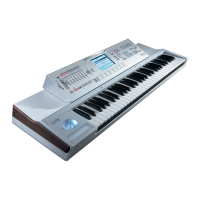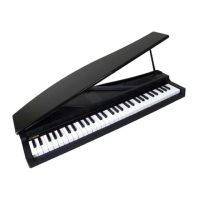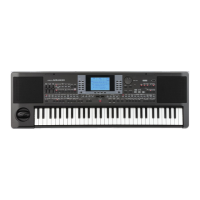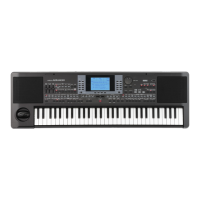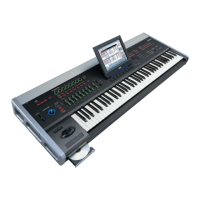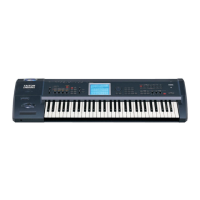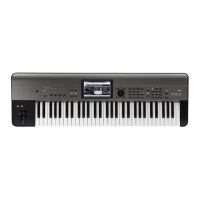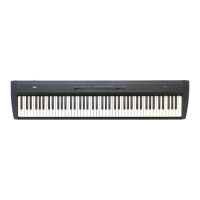BASIC
OPERATION
!STRUCTURE
OF
THE
MIRI
4-Channel Digital Audio Signal (internal routing) 4-Channel Audio Output
SYNTHESIZER
A
-
EFFECT SECTION
SECTION
B
-
Dual system stereo effects
Maximum
of
8 Programs
c
-
(sound colors), 16 voices
D
-
t
8-Channel Sequencer Play Data
SEQUENCER SECTION
8 tracks
k1
SYNTHESIS
SYSTEM
J
1/L
..___
-
2/RE-
3 -
4 -
The
AI
(Advanced
integrated)
synthesis
system
of
the
MIR
makes
it
possible
to
combine
all various sound types
-- from
conventional
synthesizer
sounds
to
sampled
sounds
and
drum
sounds.
For
sampled
sounds, the
large-capa
city
PCM
data
memory
of
16
bit
x 2
mega-words,
far
greater
than
that
of
conventional
samplers,
has
been
utilized,
and
a
carefully
selected
group
of
Multisounds
(a
sound
whose
original
wave
shape has
been
multi-sampled
1
)
has
been
installed.
For
its
synthesizer
sounds,
not
only
the D. W.G.S. waveforms
2
,
which
are
produced
by
a
process
much
the
same
as
that
of
an
analog
synthesizer,
but
also
aperiodic
or
irregu
lar
waveforms
created
by
extraction
of
harmonically
unrelated
frequency
components
3
are
part
of
the
M
lR
' s
structure
. As a result,
creation
of
new
and unique
sounds
beyond
the
existing
limitations
of
the
conventional
synthesizer
is possible.
Processing
any
of
the
programs
or
individual
sounds
with
the
use
of
VDFs
(Variable
Digital
Filter)
and VDAs
(Variable
Digital
Amplifier)
is,
of
course,
possible
.
Moreover,
different
effects
can
be
assi
gned
to specific
programs
in a
configuration
of
2 systems
and
2
channels
through
theMlR's
MDE
(Multi Digital Effect) feature
when
playing
Multisounds.
With
the use
of
these
functions,
total
control
over
all aspects
of
sound
creation,
including
effects,
is
possible.
1
Multi Sampling
The
harmonic
structure
and
overtones
present
in high
pitched
sounds
usually
differs
from
that
of
low
pitched
sounds,
even
in
the
same
musical
instrument.
Multi
Sampling
is
a
method
to
recreate
those
characteristics
by
sampling
an
instrument
repeatedly
over
a
range
of
many
octaves.
2
D.W.G.S. (Digital Waveform Generator System) Waveform Data
The
instrument
sound
is
reproduced
by the
following
process
:
Computer
analysis
determines
the frequency
components
of
the
sampled
instrument
sound
and
reproduces
them
by
creating
a harmonic
table
for them as is
done
in
additive
synthesis.
3
Extraction
of
Harmonically Unrelated Frequency Components
Sep
arates
the
aperiodic
and ha
rmonically
unre
lat
ed
components
characteristic
of
such
sounds
as
objects
bein
g
hit
or
scraped
from the
sampled
wave
shapes.
6
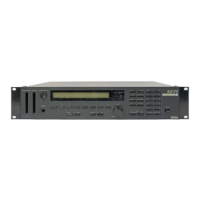
